
Review on 🔒 XYZCTEM Power Central Lock Kit - Keyless Entry Remote Control Conversion for 2,3,4 Doors Vehicles by Chris Floyd

It works well for its price with some caveats
The kit works as advertised. It appears to include all the necessary mounting hardware, and when properly installed, it's more than enough power to power any reasonable locking mechanism. The included wiring harness is long enough for a small car. A basic wiring diagram is included but the physical installation details vary widely from one car model to another leaving this part up to the installer. A certain level of mechanical ability is required. There is a mains fuse for a little security. Security isn't great as expected at this price point. See below for more details. Remote Controls: Comes with battery and works right out of the box. Sliding cover prevents dirt from getting onto the keys. The buttons have a nice solid click and seem to work reliably. The remotes are held together with tiny screws, which are probably better than plastic fasteners for long-term reliability. The kit contains two identical remote controls. A (probably unique) number is printed on the back. There is no documented procedure for learning new remote controls. So if they die or get lost, you're probably out of luck. Receiver: A small plastic box that mounts on the side, with a connector for the wiring harness. It doesn't draw too much power (around 8-10mA in standby mode) and has relay outputs for lock/unlock functions and wired inputs for manual unlock buttons. Has a small wire antenna and seems to have a decent range although I haven't tested it as I don't plan on using it. Some reviews complain about the build quality of the PCB, mine looks fine but this can vary. Wiring: A wiring harness with wires long enough to be installed in a small car. You can expand them if necessary. A 10A fuse is located on the power input as a symbol of the short circuit protection of the system. It's probably a little big for the size of the cable in the bundle, but it really can't be much smaller due to the high motor currents. Drives: Four included. They appear to consist of a small brushed motor with a single gear and rack and pinion for the sliding piston. It doesn't take much force to move the piston outward, so it shouldn't interfere with the factory locks. The system provides the motors with more voltage than needed - the drives can easily lift a 1 pound weight operating at 3 volts. In the stock configuration, they move very quickly and the long-term reliability of the plastic teeth on the internal gears is somewhat questionable. The main actuator (usually mounted on the driver's door) contains 3 additional wires for a dual switch that changes state about mid-stroke and can be used to sense if the driver is using the key to lock/unlock and automatically control other doors. . The direction of travel can be changed by swapping the blue/green wire and the brown/white wire on the main drive. You can set the direction of each drive individually according to your installation needs. Installation Notes: Actuators must be securely mounted as they must have enough force and be level so that they can push/pull more or less straight at their joints to move your vehicle's locking mechanism. This is important - if the link mechanisms are misaligned, it will take a lot of force to move the mechanism and you will experience problems such as link misalignment and binding under load. They should also be installed where they will not interfere with window movement and care should be taken that some car doors get a little wet inside due to leakage around the window seals. Security: The remote control is a simple 24-bit system that operates at 433 MHz. There is no rolling code diagram so the code can be trivially cloned by a teenager with an Arduino. Since some bits are likely reserved for the opcode, this reduces the key space for unique identifiers, and it can be handy to use brute force scanning. I haven't tested the De Bruijn scanning vulnerability yet, but it's always a problem with this type of system. I use actuators in my system and TX/RX goes to my trash can for experimentation. Other problems: As already mentioned, motors often run with overvoltage. The current drawn by a single actuator peaks in excess of 4 amps (!) during the short pulse applied. This high current may be a factor in some of the reviews showing photos of burned and melted motor cables - if something happens that causes the output to stay on all the time, something will fail. In my own testing I've found that running the motors at 3-4 volts provides enough power and reduces the impact on the end stops, probably increasing gear life. My specially designed system programmatically controls the power of the engine. Overall, it's out of the box, relatively easy to install, and should serve the average user well enough for a system of this class.
- Everything is great!
- Operating speed
New products
Comments (0)
Top products in ⚙️ Motors

Toyota 4Runner 2003-2009 Rear Hatch Latch Actuator - Back Door Lock Assembly Trunk Latch Replace 69110-35090, 69110-35062 & 69110-35060

23 Review
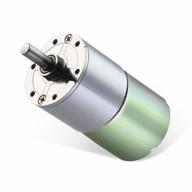
Greartisan DC 12V 30RPM Gear Motor High Torque Electric Micro Speed Reduction Geared Motor Centric Output Shaft 37Mm Diameter Gearbox

29 Review
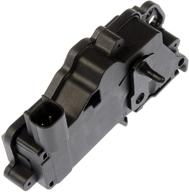
🔒 Dorman 746-162 Door Lock Actuator Motor: Ideal Replacement for Ford, Lincoln, and Mercury Models

10 Review
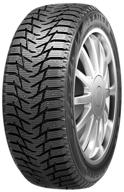
Sailun Ice Blazer WST3 255/55 R18 105T winter

43 Review
Another interesting products
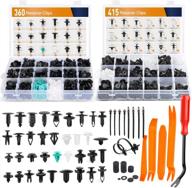
820Pcs Car Push Retainer Clips & Fasteners Assortment - Ford GM Toyota Honda Chrysler BMW Benz Nissan Subaru Audi Mazda

32 Review
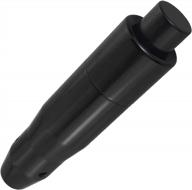
Upgrade Your Driving Experience With Lunsom'S Automatic Shift Knob: High-Quality Metal Car Shifting With Push Button & Long Stick Gear Head In Black

38 Review

Upgrade Your Mazda MX-5 Miata With CravenSpeed'S USA-Made Door Bushings

39 Review

Off-Road Fender Flares For Jeep Wrangler 2007-2018 JK & JKU Unlimited - Heavy Duty Flat Textured Steel Mud Guards In Black (Set Of 4) By Hikotor For Front And Rear Replacement (2 Or 4 Door Options)

47 Review

